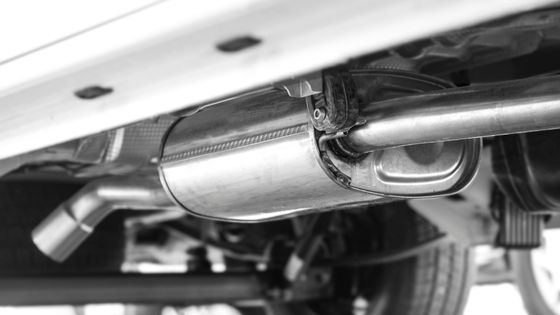More vehicles cruise the nation’s roads than ever before, yet air quality remains better than 30 or 40 years ago. At that time, large visible plumes of smog hung over some large cities mostly from vehicle emissions. Around this time authorities required catalytic converters on all vehicles, resulting in much cleaner air. Without these units, air quality would suffer, but the devices also play a role in how your car operates.


Your catalytic converter, like other parts, will not last forever, and will eventually require replacement. A time frame of every five to seven years seems reasonable for most vehicles, but of course some units can last much longer. At that time, you will have an abundance of choices from different manufacturers with varying price points and features. Continuing to drive with a failing converter will result in dirtier emissions and degraded performance.
What Is a Catalytic Converter?
This essential part of your vehicle’s exhaust system resides beneath the chassis and attaches to the exhaust piping between the intake manifold and the muffler. Sophisticated engineering allows the cat converter to burn off harmful emissions and reduce hazardous by products of internal combustion to inert substances. Rare metals, typically palladium, rhodium and platinum, coat a ceramic interior and work to reduce harmful emissions, often by as much as 90 percent. A honeycomb design or bead shape enhances the effectiveness of the device.
Certain emissions from vehicles produce pollution that can degrade a person’s ability to breathe or that can harm air and water quality. In pre-converter vehicles, nitrogen oxides, carbon monoxide and hydrocarbons streamed into the air as vehicles operated. The converter catalyzes these substances and turns them into relatively innocuous materials:
- Nitrogen oxides into carbon dioxide
- Carbon monoxide into carbon dioxide
- Hydrocarbons into nitrogen and oxygen
That is a lot of chemistry for one day. Fortunately, it all produces cleaner air for everyone.
Driving your vehicle with a bad converter can lead to several negative outcomes. At the minimum, your vehicle runs dirty and fouls the environment. Since the law requires an EPA-certified cat on your vehicle, you could face fines and penalties. Also, vehicle performance could suffer and even impact driver and passenger safety.
Signs of A Failing Converter
Most vehicles today have a check engine light function that goes on when the converter starts to fail. At this time, you can take your vehicle to a mechanic for a diagnostic reading, but this will likely cost some money. You can also use the free fix finder service at your neighborhood auto store. This will take just a few moments and personnel can assist you in the process.
Failing catalytic converters can also impact other engine functions, especially as the situation worsens. For example, in some vehicles, the cruise system won’t work until the installation of a replacement converter. Other signs of a bad unit include excessive heat coming from the exhaust system, a strong sulphuric odor, rattling noises and decreased engine performance.
Prompt replacement of failing parts on your vehicle keeps you and others safe. Shop today for the parts you need at affordable prices.
















